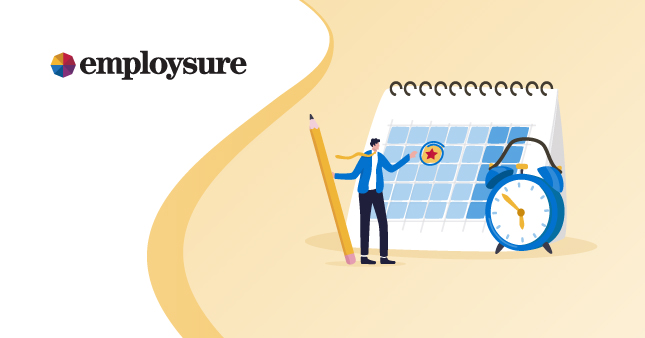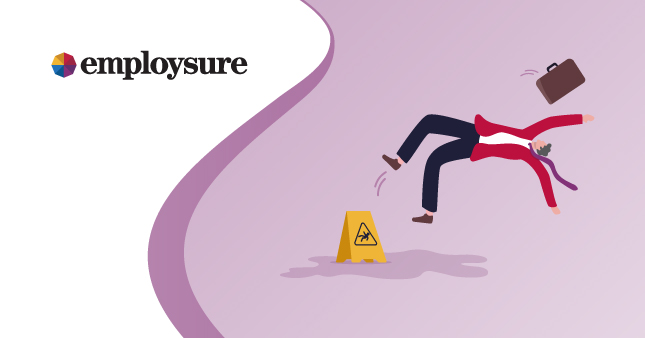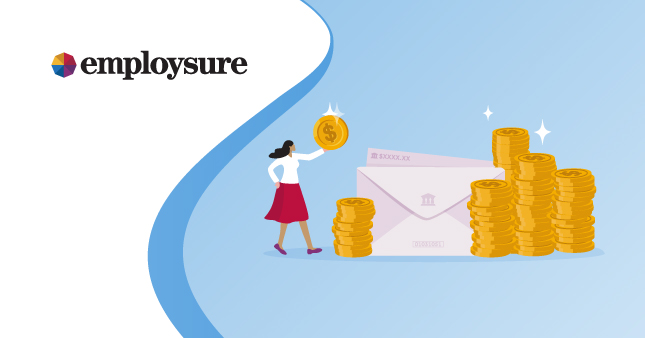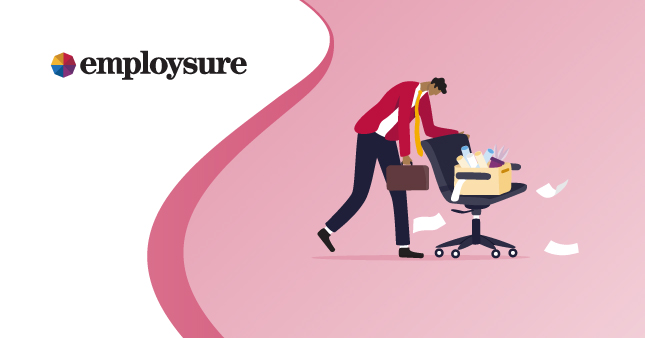
What Is Annual Leave?
Annual leave, or holiday pay, is leave which allows employees to take time off work while being paid. The minimum annual leave entitlement comes from the National Employment Standards (NES), however, Award and Enterprise Agreements may provide for additional leave. Similarly, employers may be able to give employees more leave. One important aspect of annual leave entitlement is annual leave loading, which is an extra amount paid to an employee on top of their base pay while they are on annual leave. Annual leave loading compensates an employee for lost opportunity to work overtime and other penalties while on leave.
Annual Leave And Other Leave
As one of the ten National Employment Standards (NES), annual leave is an essential part of working life and something that you as an employer should be aware of. Other types of leave entitlements that form part of the NES are personal/carer’s leave, parental leave, long service leave, community service leave, compassionate leave, unpaid family and domestic violence leave, as well as public holidays. The most important thing for you to remember with annual leave is that all employees (other than casuals) are entitled to four weeks paid leave from work each year, or possibly five weeks if they are shift workers, depending on how a shiftworker is defined in the applicable award or agreement. Please be mindful, should your employee be covered by a modern award or enterprise agreement, that the instruments may provide for additional leave beyond the minimum outlined within the NES. But there are also various other aspects of the entitlement to annual leave that you should know about including accrual of annual leave, when you can direct employees to take annual leave, and if you can cash out annual leave.
How is Annual Leave Calculated?
Annual leave accrues on a maximum of 38 ordinary hours worked in a week (unless a contract of employment specifies otherwise). This means, for the most part, even if an employee works more than 38 hours in a week, the leave accrues on just 38 of those hours. Annual leave on overtime and unpaid breaks do not accrue. Assuming there is no additional entitlement beyond the NES, a full-time employee accrues 2.923 hours of annual leave for each completed week of work (based on the standard 38-hour week).
Full-time- To calculate annual leave for a full-time employee, you must multiply the number of weeks that the employee has been employed by the business (i.e. since they started working in the company) by 2.923. This will give you the total hours of annual leave that the employee has accrued. You must deduct any annual leave that the employee has already taken; and multiply this amount by the employee's hourly of pay.
Part-time- Ron is a part-time employee who works 20 hours per week for a year. During one year, he will accumulate 80 hours of annual leave (the equivalent of 4 weeks work for him).
Casual- Casual employees do not get annual leave.
Accrual Of Annual Leave
Annual leave accrual is something employers often misunderstand. There is a common misconception that as soon as an employee joins a company, they are entitled to their full leave. However, leave builds up over a year from the day the employee starts working and accrues on the employee’s ordinary hours of work. Unless it is an unreasonable request, employees can take annual leave at any time after it has been accrued, and annual leave will continue to accrue while they are on any form of paid leave. You have to pay your employees at least their base rate of pay while they are on annual leave unless their award, agreement or contract says it must be more. The base rate generally does not include penalties, loadings or bonuses. Another thing to keep in mind is that if an employee stops working for you before they have used up their annual leave, the employer is required to pay out any untaken accrued leave as part of the employee’s final pay when their employment ends.
Directing Employees
In some cases, employers may need to direct their employees to take annual leave, but this is generally only possible if the applicable award or registered agreement allow for it. In the event that it is permitted, the Modern Award will specify in what circumstances an employer can make a positive direction. In most cases, this is limited to “shut down periods” or when an employee has excessive annual leave.
Excessive Annual Leave
Some awards and registered agreements provide that in certain circumstances the employer can direct an employee to take annual leave when they have excessive untaken annual leave. What is excessive is defined within the applicable award or agreement. The direction is only permitted if done so in accordance with the terms of the award or agreement. In many cases there are additional procedural steps that must be undertaken prior to making a direction. Some awards stipulate that, prior to making a direction, the employer and employee must first try to reach an agreement on how to reduce the leave entitlement. In the event that an agreement cannot be reached, there still may be other procedural requirements. For instance, the employer may be required to give written notice directing the employee to take leave. There may also be timeframes in which leave must be taken and restrictions on the amount of leave an employee can be directed to take.
Cashing out Annual Leave
There are some awards and registered agreements which allow employees to request their annual leave be paid or cashed out instead of taken even though they are still employed. This is generally only if:
There is a written agreement between the employer and employee that is signed by both parties;
The employee is paid as much as if they had taken the annual leave;
They cash out a maximum of two weeks of annual leave in any 12 month period.
The agreement must specify the amount of leave to be cashed out, the payment to be made for it as well as the date of payment, and must be signed by a parent or guardian in relation to any employees under 18 years of age. A copy of the agreement should be retained as an employee record. If the employee is not covered by an award or agreement they can come to an arrangement with you (their employer) to be paid out for their annual leave. An agreement to cash out annual leave must be in writing, and pay the same amount as if the employee had taken annual leave. It is also necessary for the employee to have at least four weeks of annual leave left for a payout to occur. Employsure can help you better understand annual leave entitlements. Our BrightHR software can help you keep track of your employees annual leave entitlements. If you have any questions or want to know more about managing annual leave for your employees, contact us today on 1300 495 290 for free initial advice.
Frequently Asked Questions
Who Is Entitled To Annual Leave?
All employees (except for casual employees) get paid annual leave.
How Much Annual Leave Does An Employee Get?
A full-time employee is entitled to four weeks annual leave per year based on their ordinary hours of work up to 38 hours a week, and part-time employees are entitled to pro-rata paid leave according to the number of ordinary hours they work per week. Shift workers are entitled to an additional week. Please be mindful that Awards and Enterprise Agreements may provide for additional annual leave entitlements.
How Does Annual Leave Accumulate?
An employee’s entitlement to annual leave starts to accumulate from the day they start work, based on the number of ordinary hours they work. An employee continues to accrue annual leave when they take paid leave.
When Can Annual Leave Be Taken?
Annual leave can be taken as soon as it is accumulated if the employer and the employee agree. Any accrued annual leave that is not taken rolls over to the next year.
What Payments Are Required When Annual Leave Is Taken?
Annual leave is generally paid at the employee’s base pay rate for all ordinary hours worked unless an award or registered agreement provides otherwise. Ordinary hours under the NES cannot exceed 38 hours in a week. The base rate does not include:
- overtime rates
- penalties
- allowances
- bonuses
Awards, registered agreements and contracts can also provide for a different method of payment for annual leave that includes the exclusions above. In addition, they might require the payment of annual leave loading. On termination of employment, an employer must pay an employee for any remaining untaken annual leave. The payment for the untaken leave is the same as what the employee would have been paid if they took the leave.
Can An Employer Refuse Annual Leave?
The employer must not unreasonably refuse an employee’s request to take annual leave. What constitutes a reasonable refusal depends on a number of things, for example:
- The period during which the employee wants to take leave;
- The operational requirements of the business during that leave period;
- Whether the employee taking leave at that time would be detrimental to the business;
- Whether the employee gave reasonable notice of wanting to take leave at that time.
How Is Annual Leave Paid Out At Termination?
When an employee’s employment ends, an employer must pay the employee for any accrued, untaken annual leave. The payment for the untaken leave has to be the same as what the employee would have been paid if they had taken the leave.
Can Annual Leave Be Cashed Out?
Some awards and registered agreements allow annual leave to be cashed out and provide conditions under which the leave can be cashed out. Most awards or agreements require:
- written agreement between the employer and employee that is signed by both parties;
- The employee to be paid as much as if they had taken the annual leave;
- Capping the amount of leave that is able to be cashed out to a maximum of two weeks of annual leave in any 12 month period.
The agreement must also usually specify the amount of leave to be cashed out, the payment to be made for it as well as the date of payment, and must be signed by a parent or guardian in relation to any employees under 18 years of age. A copy of the agreement should be retained as an employee record. This is a complex area and you should seek advice in respect to the relevant provisions contained within any applicable Award.
What Is The Difference Between Annual Leave Entitlement And Pro Rata?
Employees are entitled to 4 weeks of annual leave a year, based on them working 38 ordinary hours a week. Shift workers may have different entitlements and awards and registered agreements may also require additional leave. Part-time employees will work less than 38 hours a week and will therefore accrue hours in proportion to the amount of ordinary hours they work per week.
Can An Employee Take Annual Leave During A Notice Period?
Yes, if the employer agrees to the annual leave.
Can You Ask Staff To Take Annual Leave?
Yes, but they don’t have to agree to take the leave unless the applicable award or registered agreement provide for circumstances in which you can direct the employee to take leave, or they are award-free and the requirement is reasonable.
How Many Annual Leave Days Are Employees Entitled To Per Year?
Full-time and part-time employees get 4 weeks of annual leave, based on their ordinary hours of work.
Can You Take Unpaid Leave If You Have Annual Leave?
When an employee is on a period of unpaid leave, their accrual towards annual leave or personal/carer’s leave (sick leave) will pause. This is because unpaid leave is not an entitlement under the National Employment Standards (NES) and is generally not considered as service under the Fair Work Act (FW Act).
What is Annual Leave Provision?
Annual Leave forms part of the National Employment Standards (NES). The NES apply to all employees covered by the national workplace relations system.
The NES sets out the Annual Leave Provision. Annual Leave Provision is the process that states the criteria and eligibility for annual leave for employees.



